| M82 (Cigar) | Small Magellanic Cloud | Large Magellanic Cloud | NGC 6822 |
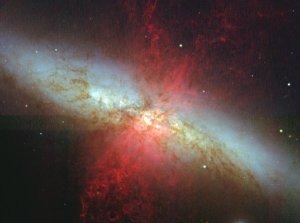 |
 |
 |
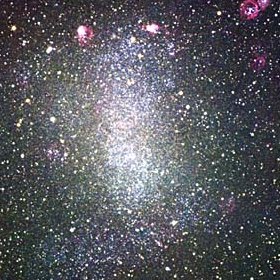 |
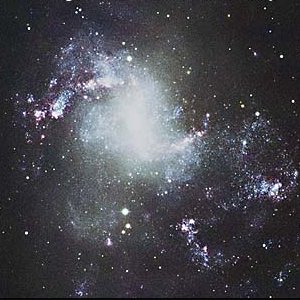 |
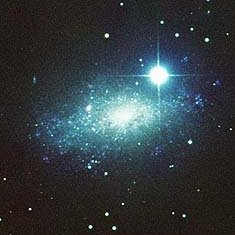 |
 |
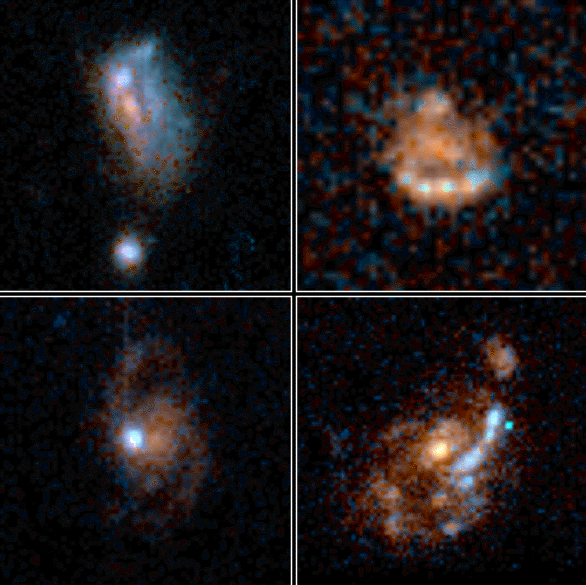 |
| NGC 1313 (starburst) | IC 5152 | NGC 4449 | MDS (distant) |
| Patchy, irregular galaxies in the nearby and distant Universe. [NASA/HST, AAO] | |||
Irregular galaxies are those that cannot be classified as either ellipsoidal or spirals. They make up roughly 3% of all galaxies. These galaxies have little symmetry in their structure, and are made up of a steadily forming supply of small clusters of young blue stars. They have masses in the range 108 to 1010 solar masses, diameters of 1 to 10 kiloparsecs, and blue magnitudes from -13 to -20 (fairly faint).
Some irregulars are believed to be low mass, low density galaxies which are less evolved than their more massive spiral neighbors. With less mass, the gravitational force contracting the galaxy is less, and it stays in a more diffuse state for a longer time. Irregulars typically contain a lot of hydrogen gas, which has not been used up yet in stellar burning in stellar cores. Many of the small dwarf galaxies which surround the Milky Way are classified as irregulars, including the Magellenic Clouds.
If we look back in time at distant galaxies, we find that the proportion of irregular galaxies increases and the proportion of spirals and elliptical galaxies decreases. This supports the theory that galaxies start out their lives in a more diffuse form, and over time they evolve to the more defined, compact states.
| Observable Evidence | Implications |
|---|---|
| blue colours (B - V < 0.8) | young stellar population |
| low surface brightness | forming |
| highly asymmetrical | not a relaxed system |
| significant amounts of dust | gas resevoir present |
| emission line spectrum | current star formation |
| ordered rotation | formation via collapse |
| common in field | formation via collapse |
| few globular clusters | formation via collapse |
| M82 (Cigar) | Small Magellanic Cloud | Large Magellanic Cloud | NGC 6822 |
 |
 |
 |
 |
 |
 |
 |
 |
| NGC 1313 (starburst) | IC 5152 | NGC 4449 | MDS (distant) |
| Patchy, irregular galaxies in the nearby and distant Universe. [NASA/HST, AAO] | |||